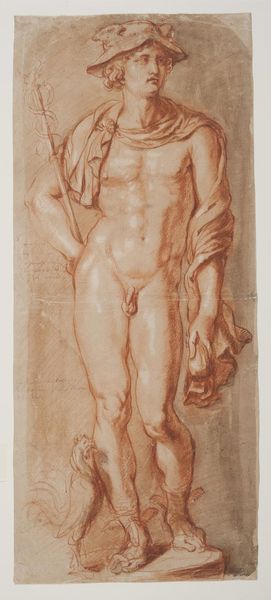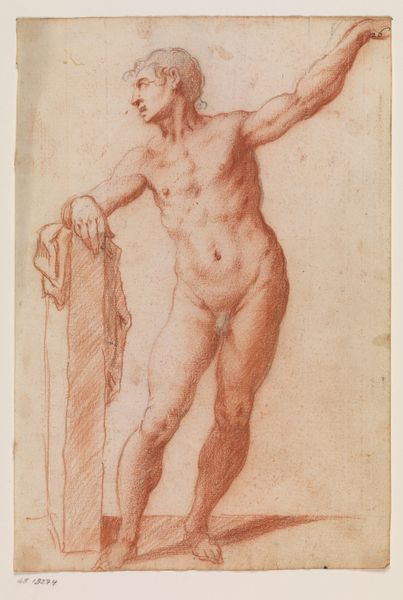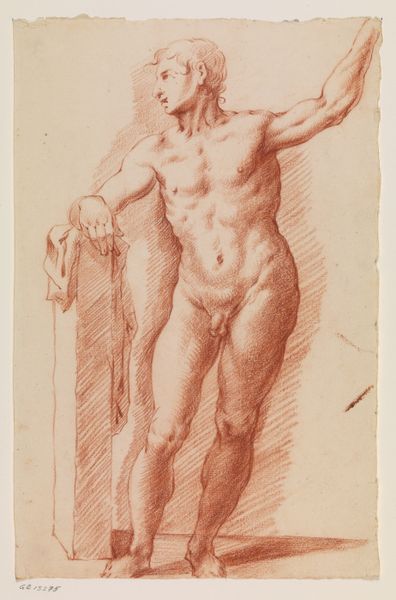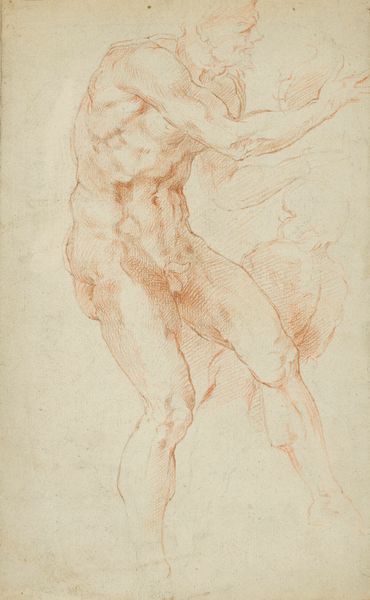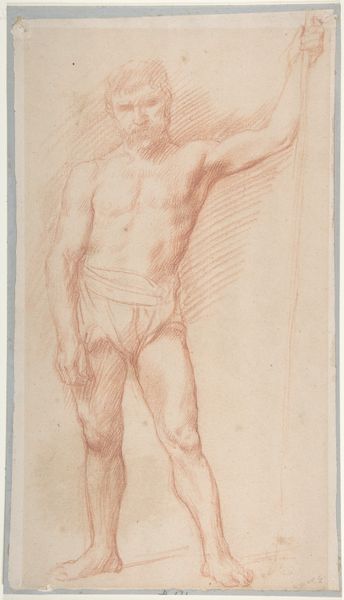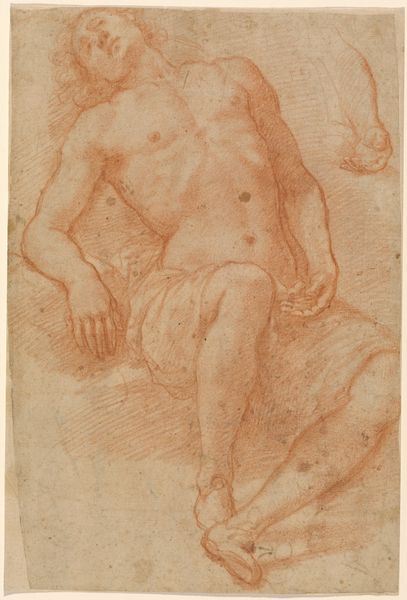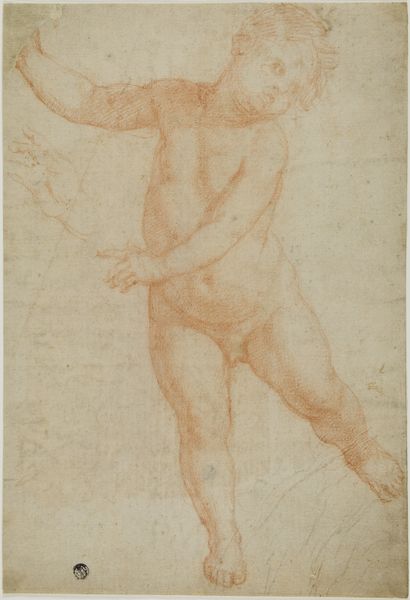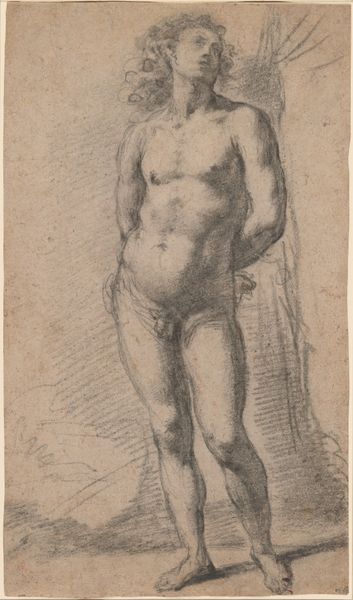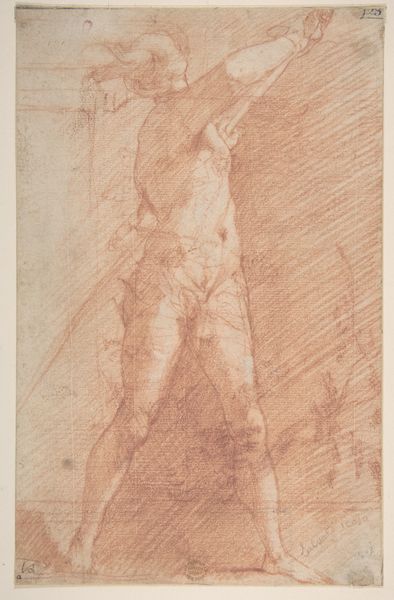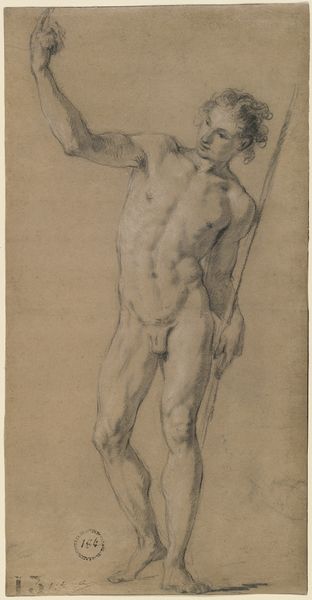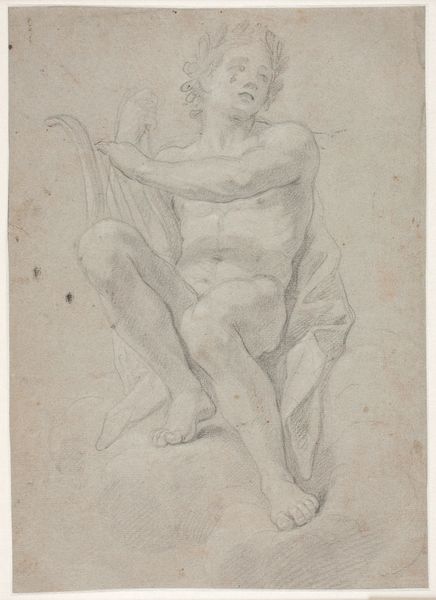
drawing, pencil
#
drawing
#
baroque
#
pencil sketch
#
charcoal drawing
#
figuration
#
pencil drawing
#
pencil
#
nude
Dimensions: height 251 mm, width 128 mm
Copyright: Rijks Museum: Open Domain
Caesar Boëtius van Everdingen made this red chalk drawing, "Standing Mercury", in the Netherlands, sometime in the mid-17th century. The image revives the classical god Mercury, messenger of the gods, and patron of commerce, who would have been very familiar to Everdingen's audience. The Dutch Republic in the 17th century was a major economic power, and there was a vogue for classical imagery and humanist ideas, especially in the institutions of art. Artists like Everdingen drew on the prestige of classical art, aligning Dutch culture with the glories of ancient Greece and Rome. They were trying to elevate the status of local art schools. The figure of Mercury would have been a potent symbol of Dutch trade and prosperity. Art historians investigate these cultural references, using sources such as emblem books and archival records to shed light on the social meanings of art. The meaning of art is always contingent on its historical and institutional context.
Comments
No comments
Be the first to comment and join the conversation on the ultimate creative platform.
